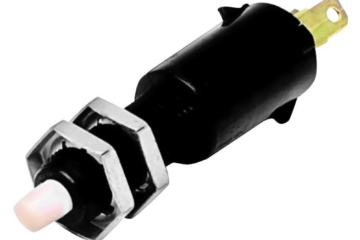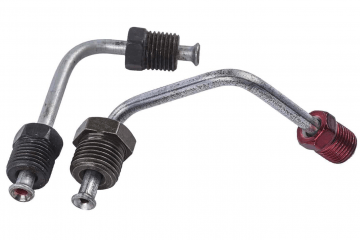It’s hard to believe, but anti-lock, or ABS brakes, weren’t always a standard item. In fact, as recently as thirty years ago, ABS brakes were still considered a premium option available only high end cars. These days, ABS systems are practically as ubiquitous as seat belts, and for the same reason. You just can’t put a price on safety. But what is your ABS system, and what does it do?
Anti-lock brakes are called that because when you bring your car to a panic stop, they prevent the wheels from locking up, potentially causing a dangerous loss of control. ABS systems do this by sending a pulse of hydraulic fluid to the brake calipers as opposed to a single blast. This pulse prevents the wheels from locking up by rapidly engaging and releasing hydraulic pressure, thus allowing a more rapid and safe stop for your car.
Visually, a car with an ABS system isn’t all that different from a car without it. The mechanical and hydraulic components are largely the same, or at least similar. A car with ABS still has brake rotors and brake pads. You’ll also still have brake calipers, brake lines, and a master cylinder. The operator interface is identical: you step on the brake pedal, and the car slows down to a stop.
So, what’s the technical difference between ABS and a conventional brake system? An ABS system has several components not found in conventional systems. First, there’s the ABS pump. Placement will vary by car, but for the most part, it’ll be near the master cylinder and brake booster. The ABS pump, or hydraulic unit, provides the pulsed hydraulic pressure to each brake caliper. Of course, different wheels may require different hydraulic pressure to stop. To differentiate, a car with ABS will have wheel speed sensors at each wheel. To tie it all together, there’s the ABS control module, a computer that reads the output of the wheel speed sensors and interprets the data in order to tell the ABS hydraulic unit what to do.
For the most part, an ABS system requires no additional maintenance as opposed to a conventional system. However, pay attention to the factory repair information. In some cases, you’ll need access to a factory-equivalent scan tool in order to properly bleed the brakes after opening the hydraulic system. In these cases, standard brake bleeding may not be sufficient to clear the hydraulic unit of air bubbles.
Modern systems are pretty hard, and problems are rare. If your ABS warning light comes on, don’t panic. The conventional parts of your brake system will work as normal, but the ABS function will be disabled. If you can’t diagnose and repair it yourself, your next stop should be a qualified shop.



